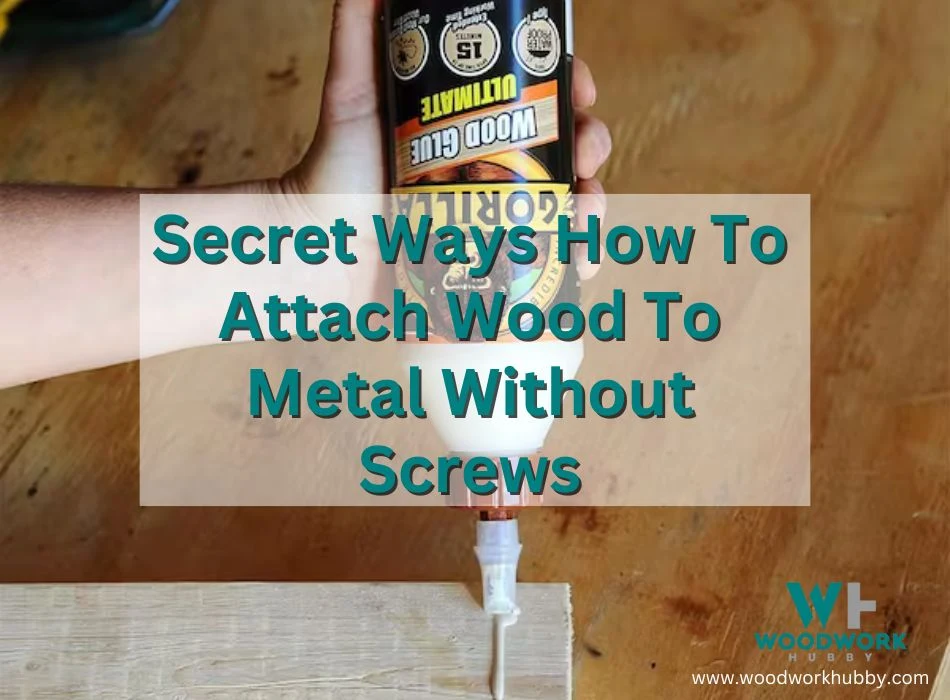Are you struggling with an innovative project, and wondering how to attach wood to metal without screws? Trust me, I’ve been there before! After scouring countless forums and woodworking blogs, I discovered several secret ways to do just that.
This blog will lay out easy-to-follow steps on how you can securely attach wood to any type of metal using only adhesive.
Key Takeaways
- Attaching wood to metal without screws is possible using adhesives like polyurethane-based glue or Gorilla Wood Glue.
- The surfaces must be cleaned and prepared before applying the glue, ensuring they are free of dirt, dust, rust, paint, grease, or any other contaminants.
- It is important to select the right glue for your project and follow the manufacturer’s instructions for mixing and application.
- After applying the glue, press the wood firmly onto the metal surface and hold it in place for a few minutes to ensure proper adhesion. Allow the glued materials to dry completely before handling them.
Overview of Attaching Wood to Metal Without Screws
This method favors using adhesives such as polyurethane-based glue or Gorilla Wood Glue instead of traditional mechanical fasteners.
Adiseal adhesive sealant has proven its mettle in the hands-on experience with a record-breaking bond strength over three times stronger than competing brands.
There are also non-adhesive solutions like wedges and lashings that can securely join your wood to metal. So whether you’re working with softwood or hardwood, aluminum, stainless steel, or another type of metal, these techniques offer solid alternatives to conventional screw connections.
Steps in Attaching Wood to Metal Without Screws
To attach wood to metal without screws, you need to first clean the surface, select and mix the glue, apply the glue, and finish the process.
Video showing how to attach wood to steel
Preparation: Cleaning the Surface
First, we need to get our wood and metal ready. Both surfaces must be free of dirt and dust for the glue to stick well. I like to use a dry cloth or brush to clean off any loose particles on the surface.
If your metal has rust on it, don’t worry! Fine-grit sandpaper works great for removing rust. Be sure to use some mineral spirits afterwards to completely remove any dust on the surface
Next, we have to make sure both surfaces are dry as wetness can weaken the bond. If there’s paint or grease on either surface you want to remove that too before moving ahead with your woodworking project.
Sometimes I notice tiny bits of leftover glue from earlier projects so I’ll grab a nail polish remover and wipe down my materials one last time just in case.
Selecting and Mixing the Glue
Pick the right glue for your job. Polyurethane-based glue, like Gorilla Wood Glue, works great for wood to metal bondings. Always read the bottle before starting. It tells you how to mix it.
Gorilla Original Gorilla Glue, Waterproof Polyurethane Glue
Too much or too little of each part will make the glue weak. Stir well until both parts mix together and form a smooth paste. Now your glue is ready!
Applying the Glue
To attach wood to metal without screws, applying the right glue is crucial. Before applying the glue, make sure to clean the surface of both the wood and metal so that they are free from any rust, paint, grease, or dust.
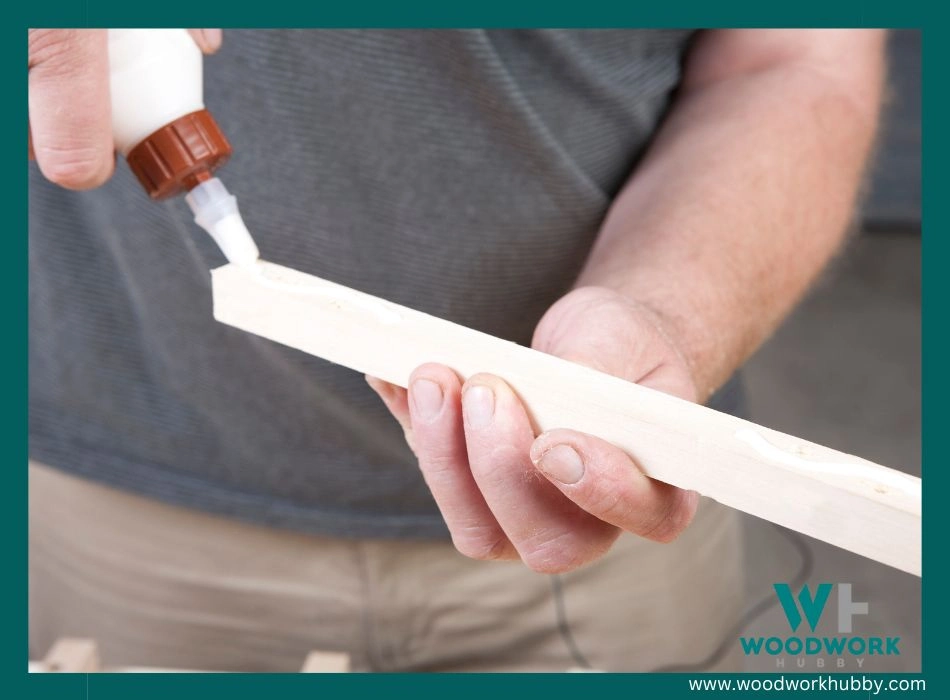
Then, select and mix the appropriate glue according to your project needs. Once mixed, apply the glue evenly on both surfaces using a brush or spatula. Press the wood firmly onto the metal and hold it in place for a few minutes to ensure proper adhesion.
Afterward, allow the glued materials to dry for about 15 hours or a full day before handling them. Remember to remove any excess glue from the edges of the materials for a neater finish.
Finishing the Process
Once the glue has been applied and the wood and metal have been securely attached, it’s important to let them dry completely. This usually takes about 15 hours or a full day for maximum strength.
During this time, it’s essential to avoid disturbing or moving the glued materials. After the drying period is over, any excess glue on the edges should be carefully removed using a nail polish remover.
Make sure to wipe down the surface to ensure a clean finish. With these steps completed, you’ll have successfully finished attaching wood to metal without screws using glue.
Types of Glue for Attaching Wood to Metal
When it comes to attaching wood to metal without screws, there are a few different types of glue that can get the job done effectively.
Video showing alternatives to super glue
Super Glues
Super glues are another type of glue that can be used to attach wood to metal without screws. They are known for their quick-drying and strong adhesive properties, which make them suitable for various DIY projects.
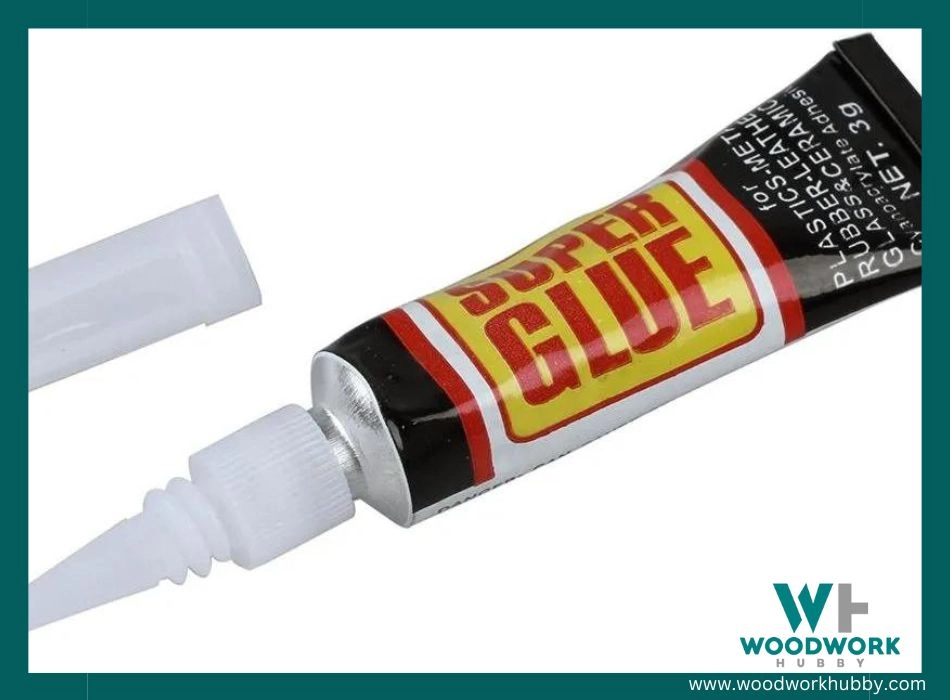
However, it is important to note that not all superglues are created equal, and some may not provide the necessary bond strength for wood-to-metal applications. It is recommended to choose a superglue specifically formulated for bonding wood and metal surfaces together.
Always follow the manufacturer’s instructions when using super glues and ensure proper surface preparation before applying the glue.
Epoxy
Epoxy is a versatile glue that can securely bond wood to metal surfaces. It creates a strong and durable connection that can withstand different conditions. Before using epoxy, it’s essential to ensure that both the wood and metal surfaces are clean, dry, and free from any rust, paint, grease, or dust.
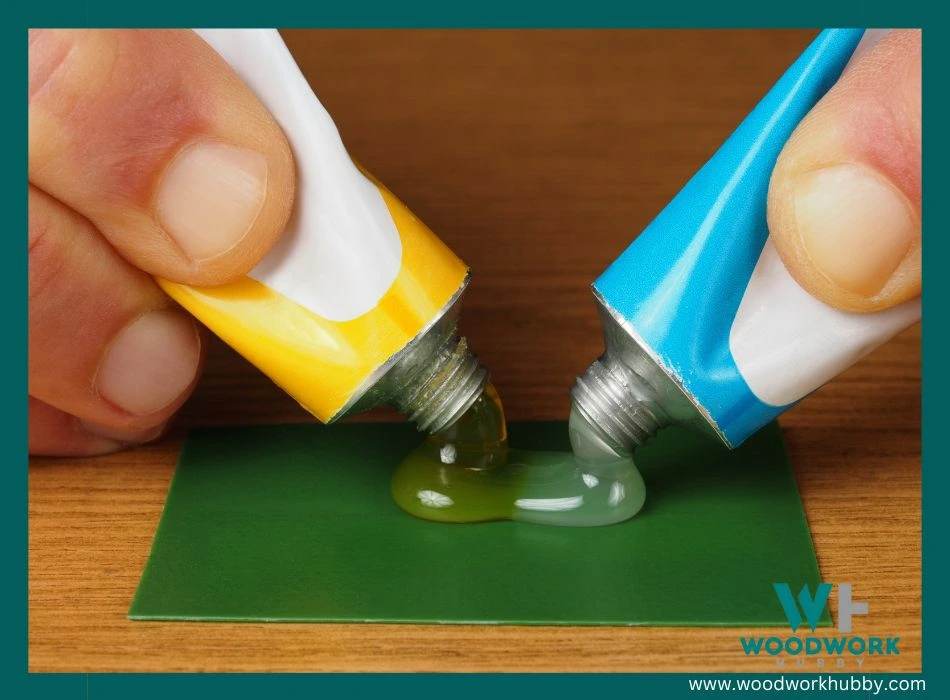
Thoroughly mix the epoxy according to the instructions provided before applying it to both surfaces. Allow the glued wood and metal to settle and dry for about 15 hours or an entire day for maximum strength.
Advantages of Attaching Wood to Metal Without Screws
Attaching wood to metal without screws offers versatility, allowing you to attach any type of wood to metal surfaces easily. Plus, it’s incredibly user-friendly as there’s no need for drilling or using power tools.
Versatility: Attaching Any Type of Wood to Metal
Attaching wood to metal without screws offers great versatility, as it allows you to attach any type of wood to metal surfaces. Whether you’re working with softwood or hardwood, the right glue can create a strong and durable bond between the two materials.
This means that no matter what your woodworking project entails, whether it’s a home improvement task or a DIY project, you can confidently use this method knowing that it will work effectively.
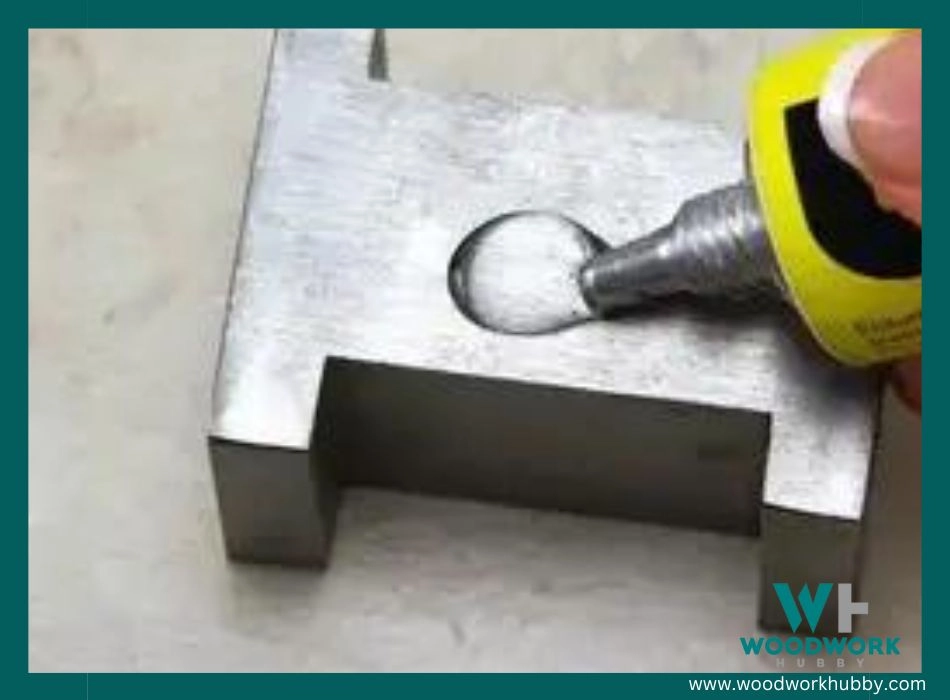
With the wide range of glues available on the market, you have plenty of options to choose from depending on your specific needs and preferences.
Ease of Use: No Drilling Required
Attaching wood to metal without the need for screws is incredibly easy and convenient. One of the major advantages of this method is that it doesn’t require any drilling. You can simply use glue or other adhesive options to secure the wood to the metal surface.
This makes the process simpler and more accessible, especially for those who don’t have access to power tools or want to avoid creating holes in their materials. With just a few simple steps, you can successfully attach wood to metal without any hassle or additional equipment.
Considerations when Choosing the Right Glue
When choosing the right glue for attaching wood to metal, it is important to consider factors such as strength and durability, safety considerations, and cost versus efficiency.
Strength and Durability
I found that the adhesive called Adiseal has a bond strength of over 3 times stronger than other glues for attaching metal to wood. It is also waterproof, flexible, and can absorb vibrations, which makes it perfect for both indoor and outdoor use.
Unlike epoxy adhesives that may initially bond wood to metal but become weaker over time, Adiseal maintains its strength and durability. Combining adhesive with mechanical fixings can further increase the joint’s strength when attaching metal to wood.
Safety Considerations
When working with glue to attach wood to metal, it’s important to prioritize safety. Always work in a well-ventilated area and wear gloves and protective eyewear to avoid any contact with the glue or fumes.
Make sure to read and follow the manufacturer’s instructions for the specific type of glue you are using. Avoid touching the glued surfaces until they have fully dried, as this can affect the bond strength.
Additionally, be cautious when handling sharp tools or sanding materials to prevent any injuries. By taking these safety considerations into account, you can complete your wood-to-metal project safely and successfully.
Cost vs. Efficiency
When choosing the right glue for attaching wood to the metal without screws, it’s important to consider both cost and efficiency. Some glues may be more expensive than others, but they offer superior strength and durability.
Investing in a high-quality adhesive can ensure a strong bond between the wood and metal surfaces, preventing any future issues or repairs. On the other hand, if you’re working on a smaller project or one that doesn’t require as much strength, there are more affordable options available that can still provide satisfactory results.
Ultimately, finding the balance between cost and efficiency will depend on your specific needs and budget constraints.
Conclusion – Secret Ways on How To Attach Wood To Metal Without Screws
To sum it up, attaching wood to metal without screws is possible with the right glue and proper preparation. By cleaning the surfaces, selecting the appropriate glue, applying it correctly, and allowing enough time for drying, you can achieve a strong and durable bond.
Using glue eliminates the need for drilling and screws, making the process easier and more versatile. So go ahead and try these secret ways to attach wood to metal without screws for your next DIY project!
FAQs
1. Can I attach wood to metal without using screws?
There are several ways to attach wood to metal without using screws, such as using adhesives like epoxy or construction glue, welding, or utilizing specialized fasteners like rivets or brackets.
2. Are these methods strong and durable?
Yes, when done correctly and with the appropriate materials, these alternative methods of attaching wood to metal can be strong and durable. However, it is important to consider factors such as weight load and environmental conditions for long-lasting results.
3. Which method should I choose for attaching wood to metal without screws?
The best method depends on your specific project requirements and the resources available. Adhesives may be suitable for lighter loads or temporary attachments, while welding provides a permanent bond for heavy-duty applications. Consult with an expert or research each method’s pros and cons before deciding.
4. Can I remove wood from metal after using one of these attachment methods?
Removing wood attached to metal without screws can be challenging depending on the chosen method. Adhesive-bonded materials might require solvent-based removers or sanding down residue while welded connections typically require cutting tools. It’s advisable to plan accordingly for potential removal needs in advance based on project considerations

